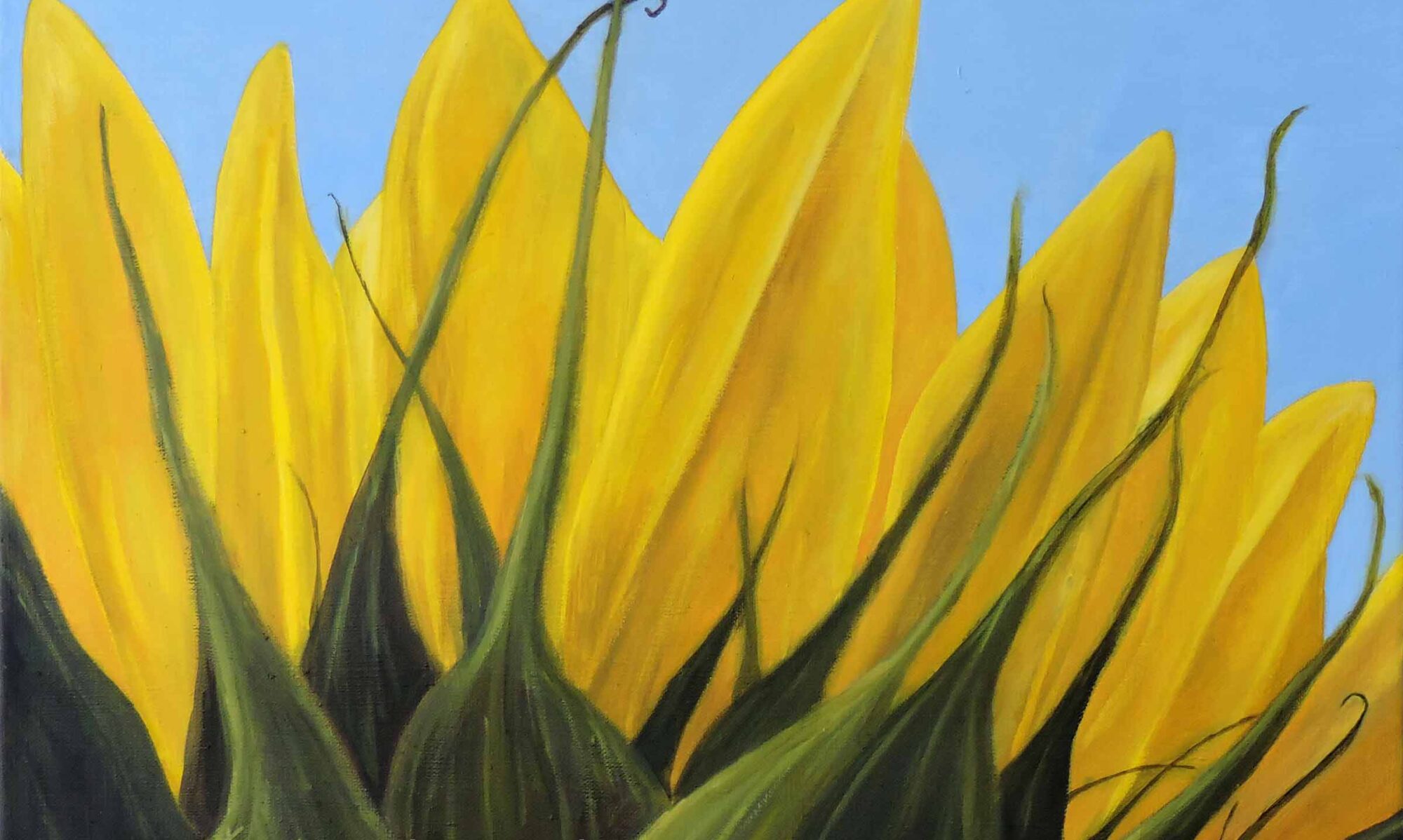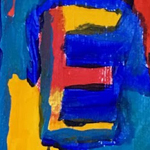
EARTH ART | EXTERNAL FOCUS
Quick links to more art terms and definitions are located at the end of the list.
Earth Art
An art movement that emerged in the 1960s and 1970s. It involves creating site-specific works using natural materials like soil, rocks, vegetation, and water. These artworks are often integrated into the landscape itself, making the environment an essential part of the piece. See also “Land Art.”
Earth Pigments
(Also known as Mineral Pigments or Natural Pigments.)
Pigments derived from naturally occurring minerals and clay deposits. These pigments have been used by artists for centuries, and they hold a timeless allure. Earth pigments are naturally colored soil: clay and minerals dug up and ground into a fine powder.
Earth pigments encompass a wide spectrum of colors, textures, and properties. Some common hues include:
-
- Ochre: Ranging from pale yellow to deep reddish-brown, ochre is one of the earliest pigments used by humans. It’s rich in iron oxide.
- Sienna: A warm, earthy brown with reddish undertones, sienna comes from natural clay deposits.
- Umber (raw and burnt): Raw umber leans toward browns, while burnt umber takes on reddish-brown tones. Both are derived from iron oxide.
- Venetian Red: This reddish-brown pigment owes its existence to hematite, another iron oxide.
Earth Tones
A term that gained popularity in the 1970s during the environmental movement. People sought to reconnect with nature and embrace more natural and organic lifestyles. These colors mirror the earth’s natural hues, including browns, greens, grays, and other warm and muted shades.
Some of the most common earth tones include:
-
- Brown: Rich and grounding, brown hues evoke soil, wood, and tree bark.
- Green: From mossy greens to olive shades, green represents foliage and growth.
- Gray: Muted grays evoke stone, pebbles, and overcast skies.
- Beige and Tan: These warm neutrals resemble sand and sun-bleached surfaces.
- Rust: A reddish-brown shade reminiscent of oxidized iron.
- Khaki: A light, yellow-brown color often associated with military uniforms.
- Olive: A subdued green with hints of gray.
- Moss: A soft, natural green found in—you guessed it—moss.
Easel
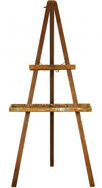
An upright support, typically a tripod, used for displaying items. It is commonly used to support an artist’s canvas while painting or to exhibit a finished painting. Artists’ easels come in a range of sizes and styles, from sturdy studio easels to lightweight, portable designs suitable for plein air excursions.
Ebru
(Also known as paper marbling.)
A traditional Turkish art form that creates intricate, marble-like patterns on paper. This technique involves floating pigments on the surface of water or a viscous solution called “size” and then transferring the patterns onto paper.
Artists use special tools such as brushes made from horsehair and rose twigs to manipulate the colors on the water surface, creating unique, flowing designs. Once the desired pattern is achieved, a sheet of paper is carefully placed on top to absorb the pigments, capturing the intricate design. No two Ebru pieces are identical.
Ecological Art
(Also called “eco-art.”)
A contemporary art genre and artistic practice created by artists worldwide concerned about local and global environmental situations. Artworks that are made from recycled and natural materials.
Ecorché
(Pronounced “eh-kor-SHAY.”)
Refers to a representation of a human or animal figure with the skin removed to display the underlying muscles, bones, and anatomy. This technique is often used in anatomical studies and artistic training to help artists understand and depict the human body more accurately. Ecorché models can be sculptures, drawings, or paintings, providing a detailed view of the internal structure and aiding in the study of proportions and movement.
Ecorché has been used since the Renaissance by artists like Leonardo da Vinci and Michelangelo, who meticulously studied anatomy to enhance their depictions of the human form. It remains an important tool in art education and medical illustration.
Ecru

A color similar to that of unbleached linen. Once considered a shade of beige, it has now become more precisely defined as “a grayish yellow that is greener and paler than chamois or old ivory.” Ecru comes from the French word écru, which means “unbleached.”
Egg Tempera
A permanent, fast-drying painting medium used for fine art, restoration, and icon painting. It consists of pigments mixed with a water-soluble binder, typically egg yolk. This was a very common medium before the invention of oil paints.
Elements of Art
The fundamental components used by artists to create their works. These elements are often referred to as the building blocks of art. There are seven primary elements:
-
- Line: A mark with length and direction, created by a point that moves across a surface.
- Shape: A two-dimensional area defined by lines or edges. Shapes can be geometric (like squares and circles) or organic (free-form or natural shapes).
- Form: A three-dimensional object with volume and thickness. Forms can be viewed from different angles.
- Space: The area around, between, or within objects. Space can be positive (filled with something) or negative (empty areas).
- Value: The lightness or darkness of a color. Value helps to create depth and contrast in an artwork.
- Color: The hue, value, and intensity of an object. Color can evoke emotions and set the mood of a piece.
- Texture: The surface quality of an object, which can be tactile (actual texture) or visual (implied texture).
These elements are essential for creating balanced, engaging, and visually appealing artworks.
Embossing
A process in printing to create a raised surface on paper or other substrates. It adds texture and dimension, turning a flat sheet into a tactile experience. The process involves custom-made dies (metal plates) that shape the paper fibers to create the raised effect. Types of embossing include:
-
- Blind Embossing: No other embellishments—just the embossed effect itself.
- Combination Embossing: Combines embossing with other finishes like foil stamping.
- Registered Embossing: Combines embossing with ink, foil, or other elements.
- Single-Level Embossing: Simplest form, using a die that changes the paper surface at one level.
- Multi-Level Embossing: Uses a die with distinct levels for more detailed texture.
- Sculptured Die: Custom hand-tooled die for bas-relief-like sculptural impressions.
Emphasis (in art)
A design principle that draws attention to a single area or focal point within an artwork, giving it dominance and making it stand out. Without emphasis, a composition is merely a collection of equally important features, and nothing stands out when it lacks emphasis.
En Plein Air Painting
(French for “in the open air.” Also called “Plein air painting.”)
Refers to creating artwork outdoors, directly in the natural environment. Instead of working in a studio, artists venture into the open air to capture scenes, landscapes, and people using natural light. This approach allows them to observe changing weather conditions, light, and atmosphere firsthand. The French Impressionists popularized plein air painting, emphasizing spontaneity and the immediacy of perception. Notable artists who practiced this technique include Claude Monet, Pierre-Auguste Renoir, and Alfred Sisley.
Encaustic Painting
(Also known as hot wax painting.)
A technique that involves applying a heated wax medium infused with colored pigments to a surface, often using wood or canvas. The medium consists of beeswax and damar resin, mixed with oil paint or ink. Metal tools and specialized brushes shape the medium as it cools, while heat lamps or torches fuse and bind the layers. This technique allows for sculpting and layering materials within the wax.
Engraving
A printmaking technique where an artist incises or cuts a design into a hard surface, usually a metal plate, with a tool called a burin or graver. The grooves created by the cutting tool hold the ink, which is transferred to paper through pressure, typically using a printing press. This technique allows for precise, intricate details and fine lines, making it a favored method for producing high-quality prints, such as illustrations, maps, and banknotes.
Entomological Art
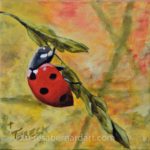
Artworks inspired by insects, or those created with insect-derived materials. Throughout history and across cultures, insects have consistently influenced artists and artisans. For example, the ancient engravings of crickets and scarab beetles found in Egyptian religious art highlight the longstanding impact of insects.
Contemporary entomological art focuses on insects as subjects often evoking a blend of fascination and repulsion, reflecting our complex feelings toward these tiny creatures. Ultimately, entomological art provides a distinctive viewpoint, allowing us to appreciate the beauty and strangeness of these tiny creatures, offering a fresh perspective of life on Earth. See also “insect art.”
Environmental Art
Artistic works intended to enrich or blend in with the surrounding natural environment. It includes historical perspectives on nature as well as more contemporary ecological and political works that seek to improve the environment, integrate with it, or make a statement about environmental challenges.
Environmental Still Life
A genre of still life painting that focuses on depicting objects within a broader environmental context, often highlighting themes related to nature, sustainability, and the impact of human activity on the environment. This type of still life goes beyond traditional compositions by incorporating elements that reflect environmental concerns and the natural world. Artists working in this genre might include items like plants, recycled materials, or objects found in nature, arranged in a way that draws attention to environmental issues. The goal is often to provoke thought and raise awareness about topics such as pollution, climate change, and conservation.
Etching
A printmaking technique where artists scratch or draw their design into a metal plate coated with an acid-resistant substance. Ink is applied to the etched lines, and then the plate is pressed onto paper to create the final print. It’s a versatile method used for intricate and expressive artworks.
Ethnographic Art
Refers to the visual arts and material culture of indigenous peoples. It’s also known as non-Western art or tribal art. Historically, Western anthropologists, private collectors, and museums—especially ethnographic and natural history museums—have collected these artworks. They often have ceremonial or religious significance and originate from rural tribal cultures. See also “Tribal Art.”
Exhibition (in art)
Refers to the organized display of artworks for public viewing. These exhibitions can be held in various venues such as galleries, museums, art fairs, or alternative spaces. Exhibitions are curated to showcase the work of individual artists, groups, or specific themes and periods in art.
They serve multiple purposes by:
-
- Providing artists with a platform to present their work.
- Allowing the public to engage with art.
- Fostering dialogue and critical analysis.
Exhibitions can range from small, local shows to major international events like the Venice Biennale or Art Basel.
Expressionism
Post-World War I European art movement that emphasized the expression of inner experience rather than a solely realistic portrayal. This art form emphasizes subjective emotions and responses that objects and events arouse in the artist rather than objective reality. Expressionism is marked by its use of distorted lines and shapes, along with exaggerated colors, to evoke emotional resonance. Vincent van Gogh is highly regarded as a pioneer of this artistic movement.
External Focus
In the realm of art, this term refers to an approach where artists draw inspiration from the physical world around them. Artists with an external focus observe and depict their surroundings. This external perspective often leads to the creation of objective art, which is experienced by viewers rather than emanating solely from the artist’s internal thoughts or emotions.
Opposite of “internal focus.”
You May Also Like
This dictionary of art definitions is provided as a valuable resource for art enthusiasts. If you like the information here and find it helpful, please consider purchasing a painting. Your support helps to cover the cost of keeping this art terms lexicon online. Simply click or tap the thumbnail link of any Teresa Bernard oil painting to view additional details.
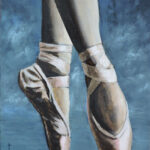
6″ w x 8″ h
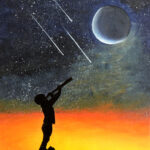
(2022)
9″ w x 12″ h
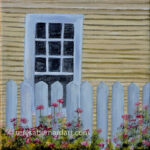
6″ w x 6″ h
Art Glossary Quick Links
Contributing to The Art Dictionary
The art definitions dictionary is a work in progress. We regularly add new terms and definitions. If you know of an art term and definition that isn’t already listed, but you believe it should be, send it to us and we’ll consider adding it. We’ll let you know if we do. Thanks!
Thanks for reading this!
